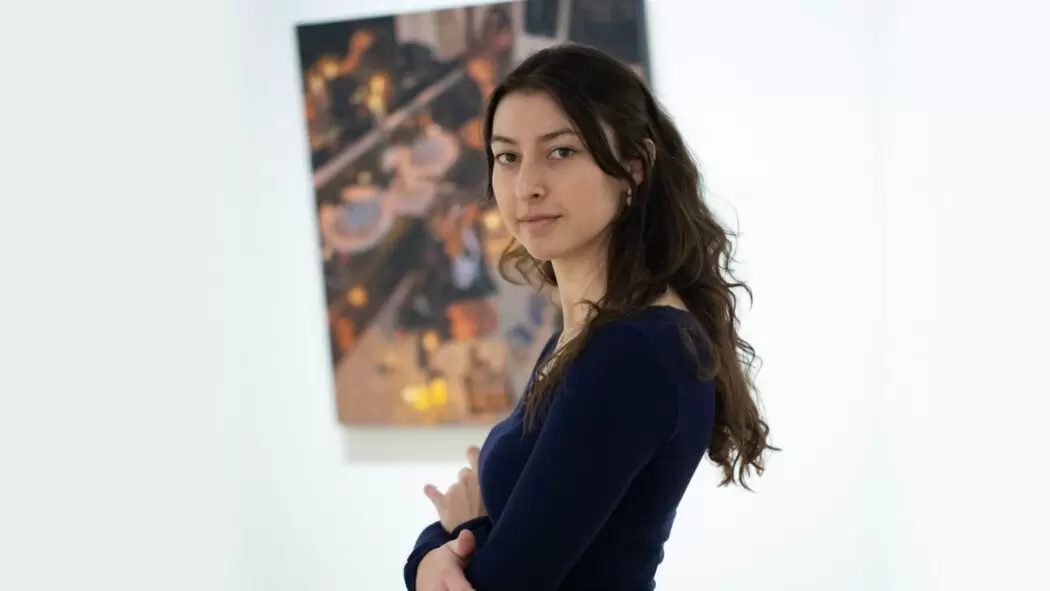Art History 101: Love and Lust Throughout Art History
Will you be our Valentine? We’re looking at the artistic practice of lust and love in a special Valentine’s edition of .ART History 101


Featured image: François Boucher, La Naissance de Vénus, 1754, oil on canvas. The Wallace Collection
Love tokens and erotica have a long and diverse history in art history. From antiquity to the present day, artists have used their skills to depict the beauty, passion, and sensuality of love. The earliest examples of love tokens and erotica in art can be found in the ancient cultures of Mesopotamia and Sumeria. These cultures produced a variety of art forms that depicted love and desire, including intricate carvings and engraved metal objects. In Mesopotamia, sculptures of couples embracing were common, and some of these works of art were even used as tokens of love and devotion.

The votive Vase of Warka, from Warka (ancient Uruk), Iraq. Jemdet Nasr period, 3000-2900 BCE. The Iraq Museum, Baghdad. The vase was discovered in 1934 in the temple of Inanna, the goddess of love, fertility, and war and the main patron of the city of Uruk.
The ancient Greeks were one of the first cultures to depict love and sex in their art. They depicted love as a central theme in their poetry, plays, and visual arts. In Greek mythology, Aphrodite, the goddess of love and beauty, was depicted as a symbol of sexuality, sensuality, and fertility. The Greeks were also famous for their erotic vase paintings, which depicted scenes of lovemaking, orgies, and sexual encounters between gods and mortals. These vases were popular both as household objects and as grave goods, and were made in a variety of styles and designs.
In ancient Rome, artworks imbued with themes of love of lust were very popular. Roman wall paintings, sculptures, and other works of art provided a window into the ancient Roman world and its attitudes towards sex, love, and relationships. During this period, love tokens such as rings and coins were commonly used as symbols of love and devotion. Intaglio rings and jewelry items made from delicately carved precious and semi-precious stones were tokens of wealthy members of society to express their emotions

Ancient Roman intaglio depicting a male and female bust separated by a palm leaf; possibly a marriage intaglio
The Middle Ages saw a decline in the depiction of love and sex in art, as the Church and other religious institutions, such as the rise of Islam in 700 CE, exerted a strong influence over the arts. Morality, devotion to God, and a chaste modest life became the keystones of society, However, there were still some artists who created works of erotica, although these were often hidden from public view. For example, the poem “The Song of Songs” in the Old Testament was interpreted as an allegory for the love between God and his people, but it was also interpreted as an allegory for sexual love. This interpretation gave rise to a tradition of illustrated manuscripts depicting sexual encounters between the bride and groom.
During the Renaissance, love tokens and erotica once again became a popular subject in art. The Renaissance saw a revival of classical themes and motifs, including the depiction of love and sex. Coming out of a period of war, Plague, and religious upheaval, Europe sought to explore the limits of art, luxury, lust and decadent love. The works of artists like Michelangelo, Leonardo da Vinci, and Botticelli depicted the human form in all its beauty, with an emphasis on the sensuality and sexuality of the human body. These works were often inspired by classical myths and legends, and were often depicted in a highly stylized and idealized manner.

Sandro Botticelli, “The Birth of Venus”, c. 1484–1486, tempera on canvas. Uffizi Gallery, Florence
The Baroque period was another time of great artistic expression and creativity, and love tokens and erotica once again became popular subjects in art. During this period, artists like Caravaggio and Rubens created works that depicted the human form in a sensual and sexually charged manner. These works were often inspired by classical myths and legends, and depicted the human form in a highly stylized and idealized manner. The influence of royal court life which included open promiscuity and lovers heavily influenced artistic practices. Under the guise of mythological tales and flirtatious innuendos, artists were able to express emotions of lust and love within their works.
On the heels of the Baroque period of the 17th century, the tradition of 18th-century lovers’ eye jewelry became fashionable among the aristocrats and wealthy classes to express private affections more publically. Lovers’ eye jewelry was usually commissioned by one partner and given to the other as a token of love and devotion. The miniature portrait was usually painted by a skilled miniaturist and would often be made to look like a realistic representation of the person’s eye, hence the name “lovers’ eye.”
Lovers’ eye jewelry was especially popular among the members of the court of King George III, and was often given as a secret token of love between two people who could not be together publicly. The jewelry was also popular among travelers, who would take a miniature portrait of their loved one with them on their travels as a way of staying connected.

A “lover’s eye” on a brooch surrounded by split pearls, from about 1790, to be shown at the Birmingham Museum of Art.
In the 19th century, love tokens and erotica were once again popular in art, as artists continued to explore the beauty and sensuality of the human form. The Pre-Raphaelite movement, for example, was inspired by classical myths and legends, and depicted the human form in a highly stylized and idealized manner. Many of the works of the Pre-Raphaelite artists, such as Dante Gabriel Rossetti and John Everett Millais, depicted the female form in a sexually charged manner, and were seen as a challenge to the prevailing attitudes towards women and sexuality.
Also, during this period, the macabre and spiritualism wove together with romanticism in the Victorian era. Hair jewelry, a type of sentimental jewelry that is made from human hair, was popular in the 18th and 19th centuries, when people would often make sentimental jewelry from the hair of their loved ones as a way of keeping their memory close. Additionally, these tokens were ways of expressing love and affection between partners. Some pieces of hair jewelry were also used to commemorate special occasions, such as weddings and births, and were often passed down from generation to generation as family heirlooms. Hair jewelry was typically made in the form of brooches, bracelets, necklaces, and earrings, and was often decorated with intricate gold or silver work.
Looking at contemporary art, themes of love and eroticism are still found in many artists’ works. Kara Walker, for example, uses these themes to critically examine the complexities and contradictions of love, race, and gender. One of her most well-known pieces, A Subtlety or The Marvelous Sugar Baby, (2014) is a monumental sculpture of a sphinx-like figure made out of sugar that serves as a commentary on the ways in which black women have been objectified and fetishized throughout history. Through her art, Walker challenges viewers to consider the ways in which love and desire can be intertwined with power and oppression.

Kara Walker, “A Subtlety” (2014).
At the crux of this exploration into love and lust in art history is the shared human experience of these emotions. The sometimes overwhelming feelings of passion have been captured visually throughout history as a means to express these complex narratives. These powerful symbols of love and devotion have also provided a window into the cultural, social, and historical context of the people who created and used them. Love tokens are a testament to the enduring power of love as a source of inspiration and motivation in the arts and are a constant reminder of a shared human experience among us all.





